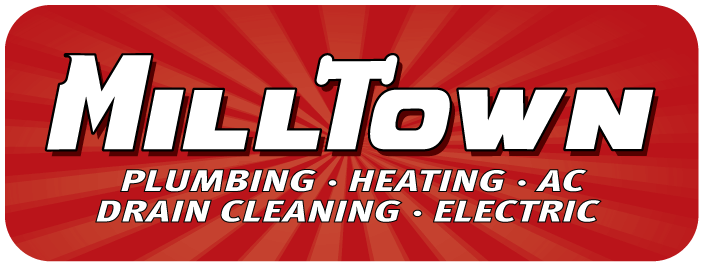8 Most Common Electrical Code Violations
- Electrical

Many confident homeowners take the DIY electrical plunge thinking it can’t be that difficult to install wiring into outlets and breaker boxes. Although they may accomplish their goal of powering their home, that great feeling of “I did it all by myself!” is often short-lived and wrought with consequences, such as unsafe wiring, reduce property resale value and failure to pass regional and local electrical safety inspections.
What is the National Electrical Code?
A subgroup of national fire codes, the NEC is a book of electrical installation and renovation safety standards established by the National Fire Protection Agency. While not mandated by regional laws in the U.S., the NEC has been adopted by over 98 percent of all U.S. areas. Every three years the NFPA publishes a large volume of electrical safety codes covering both indoor and outdoor electrical practices and standards that serves as a reference guide for professional electricians. Topics discussed in the NEC include conductors, wiring, cables and voltages.
8 Common Electrical Code Violations Every Homeowner Should Know
1. Installing the wrong circuit breaker or failing to install circuit breakers
Circuit breaker boxes contain switches that “trip”, or turn themselves off to stop the flow of electricity in specific parts of a home if the electrical current in that particular area exceeds preset limits. When a switch is tripped, the circuit breaker needs to be manually reset to return the current to its preset level. Some circuit breakers will automatically reset without human intervention. Neglecting to install the right circuit breaker (or none at all) is not only an electrical code violation but will also put your and your family at high risk for a fire raging in the wall on which the circuit breaker box is attached.
2. Switch locations do not have neutral wires
Most automated light switches require a neutral wire. Switches that don’t need a neutral wire will give you incandescent lighting only. If your home uses fluorescent, LED and other light devices under 20w, you must use a neutral wire or be in violation of electrical codes. The purpose of a neutral wire involves completion of the 120-volt AC circuit, which it accomplishes by providing a safe avenue back to an electrical panel. Here, the insulated neutral wire connects and bonds to the ground to prevent accidental electrocution.
3. Neglecting to install tamper resistant receptacles
The 2014 edition of the NEC requires all new or renovated homes/dwellings install tamper resistant receptacles with spring-loaded coverings (shutters) that protect contact slots in the receptacles. When you insert a plug into one of these TR receptacles, you compress both springs so that shutters open to allow insertion of a plug’s metal prongs. Since two springs need to be compressed simultaneously, a child inserting something into just one opening won’t cause electricity to flow into the receptacle. Even if you do not have children, your new or renovated dwelling must have tamper resistant receptacles.
4. Not installing enough receptacles
The National Fire Protection Association estimates nearly 50,000 dwelling fire in the U.S. happen every year due to overloading an electrical system not equipped with enough receptacles. To compensate for lack of outlets, homeowners are quick to rely on extension cords not designed to handle large amounts of electricity. Signs of overloaded circuits that could cause fires include dimming/flickering lights, frequently tripped breakers and getting a slight shock when you plug in an appliance.
5. Leaving outdoor receptacles uncovered
Although this seems like a no-brainer, many building owners don’t think of the dangers involved with leaving an electrical receptacle exposed to the elements. If your dwelling has outdoor receptacles that aren’t shuttered, you are in violation of an electrical code that could delay the sale of your home or even reduce the value of your home.
6. Failing to install ground fault circuit interrupters
Ground faults occur when electricity escapes wiring and takes a direct shortcut to the floor. When ground faults pass through a person, the result could be a deadly electrocution. This is why the National Electric Code requires GFCIs in outdoor receptacles and in new or renovated bathrooms, kitchens, unfinished basements and crawl spaces.
7. Outdated wiring in homes over 50 years old
Electrical wiring in dwellings constructed before 1970 may be in violation of local or regional electrical codes. Aluminum wiring widely used in the 70s may be safe but could present safety issues if connected to copper wiring. Older homes with aluminum wiring will probably need an inspector to confirm it has been properly installed, a complicated procedure best left to professionals.
8. Improperly configuring panels
DIYers aggravated by a constantly tripping fuse or breaker often may hastily replace the offending breaker with a larger capacity breaker. In addition to being extremely dangerous, it is also illegal to have wrongly configured panels and is in direct violation of electrical codes. A breaker is matched to load capacity and wire size. Larger breakers allow more and more current to flow through before they trip, catch on fire or blow out your home’s electricity system.
Adhering to electrical codes means living safely in your home, having appliances and fixtures that operate smoothly, saving on troubleshooting electrical problems, reducing your energy costs and maintaining a higher property resale value on your home.
Call MillTown today and schedule your checkup to see if you need fixes for electrical code violations in your house!
Read What Our Happy Customers Had To Say!











